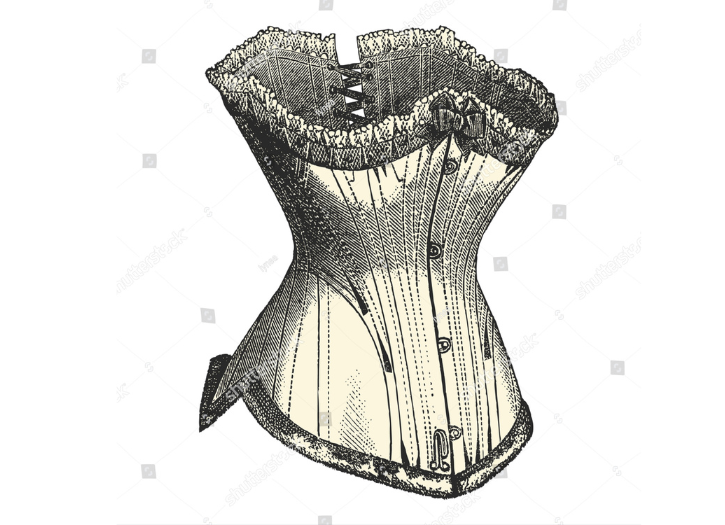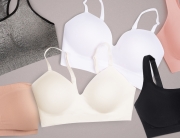The corset reached its longest length in the early 20th century. At first, the longline corset reached from the bust down to the upper thigh. There was also a style of longline corset that started under the bust, and necessitated the wearing of a brassiere, a style that was meant to complement the new silhouette. It was a boneless style, much closer to a modern girdle than the traditional corset.
By the 1960s, the advent of hippie culture and youth rebellion led the wasp-waisted silhouette to fall out of favor. Feminist activists protested against the restrictive nature of Dior’s designs. In 1968 at the feminist Miss America protest, protestors symbolically threw a number of feminine products into a “Freedom Trash Can.” These included girdles and corsets, which were among items the protestors called “instruments of female torture”.The 1960s and 1970s saw the rise of popular fitness culture, and diet, plastic surgery (modern liposuction was invented in the mid-1970s), and exercise became the preferred methods of achieving a thin waist.
The sexual revolution of the 1960s and 70s brought with it midriff-revealing styles like the crop top, and many women chose to forgo supportive undergarments like girdles or corsets, preferring a more athletic figure. The corset has largely fallen out of mainstream fashion since the 1920s in Europe and North America, replaced by girdles and elastic brassieres, but has survived as an article of costume. Originally an item of lingerie, the corset has become a popular item of outerwear in the fetish, BDSM, and Goth subcultures. In the fetish and BDSM literature, there is often much emphasis on tightlacing, and many corset makers cater to the fetish market.
Outside the fetish community, living history reenactors and historic costume enthusiasts still wear stays and corsets according to their original purpose to give the proper shape to the figure when wearing historic fashions. In this case, the corset is underwear rather than outerwear. Skilled corset makers are available to make reproductions of historic corset shapes or to design new styles.Since the late 1980s, the corset has experienced periodic revivals, all which have usually originated in haute couture and have occasionally trickled through to mainstream fashion.
Fashion designer Vivienne Westwood’s use of corsets contributed to the push-up bust trend that lasted from the late 1980s throughout the 1990s. Those revivals focussed on the corset as an item of outerwear rather than underwear. The strongest of the revivals was seen in the Autumn 2001 fashion collections and coincided with the release of the film Moulin Rouge!, in which the costumes featured many corsets as characteristic of the era. Another fashion movement, which has renewed interest in the corset, is the steampunk subculture that utilizes late-Victorian fashion shapes in new ways.
In the early 2020s, corset-inspired tops and dresses began to trend as part of the regencycore aesthetic, inspired by television series like Bridgerton and The Gilded Age.
Photo Credits: Shutterstock







Add Comment